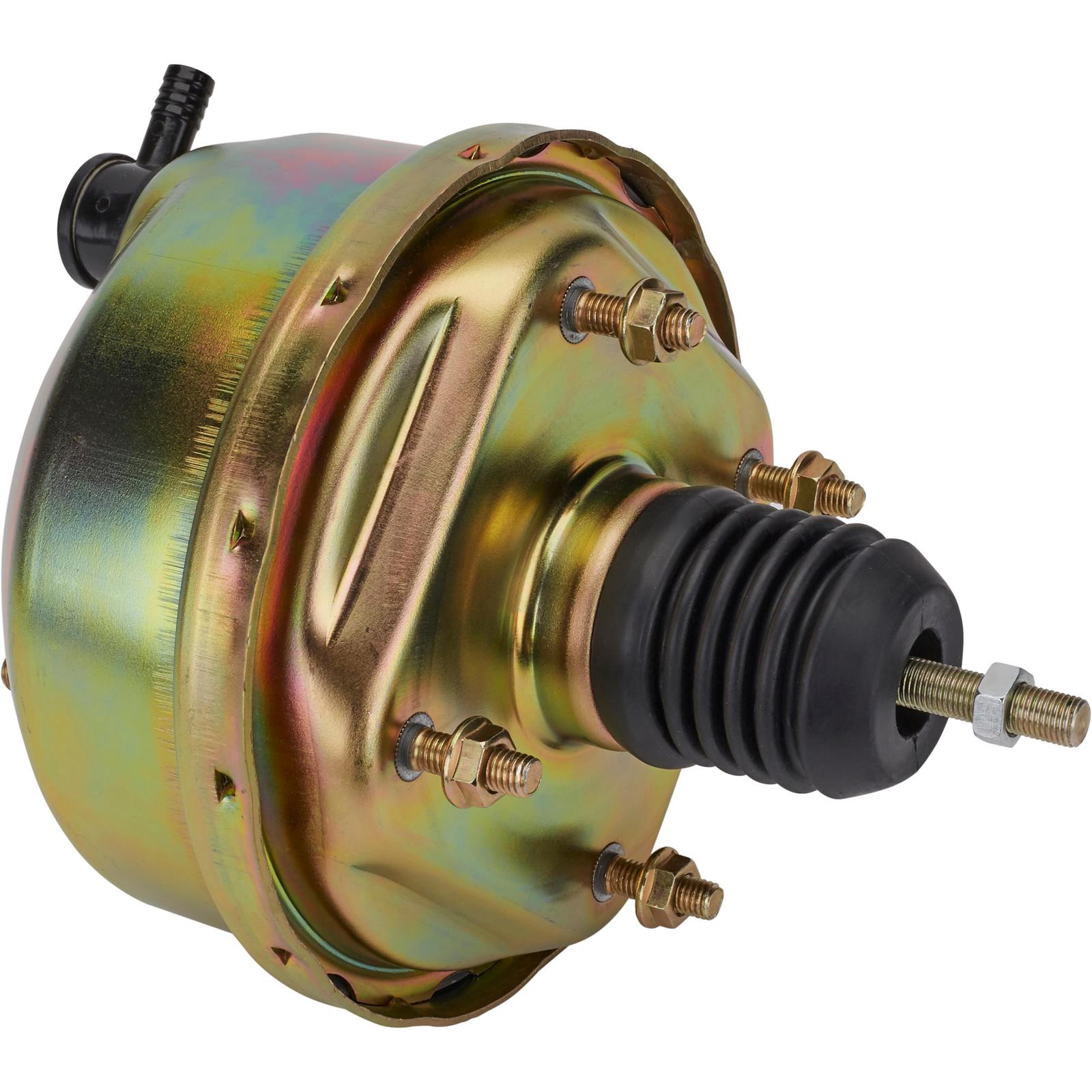
- POWER BOOSTER MASTER CYLINDER DRIVER
- POWER BOOSTER MASTER CYLINDER MANUAL
- POWER BOOSTER MASTER CYLINDER UPGRADE
Warning: The Hydro-Boost accumulator must be fully depressurized by pumping the brake pedal a dozen times before any hydraulic lines are opened or the booster is disconnected. If a braking problem turns out to be in the booster, the booster will have to be replaced. This creates the force that multiplies the force of the driver’s foot on the brake pedal. As a result, the diaphragm has vacuum pulling against one side and air pressure pushing on the other. This blocks off the vacuum port to the backside of the diaphragm and opens an atmospheric port that allows air to enter the back chamber.
POWER BOOSTER MASTER CYLINDER DRIVER
When the driver steps on the brake pedal, the input rod assembly in the booster moves forward. A vacuum hose from the intake manifold on the engine pulls air from both sides of the diaphragm when the engine is running.

The booster housing is divided into two chambers by a flexible diaphragm. The original "Master-Vac" power brake booster that became the predecessor to virtually all vacuum boosters today was patented back in the 1950s by Bendix. How the brake booster uses vacuum to provide power assist is amazingly simple. As a result, diesels have to use an auxiliary vacuum pump if they have a vacuum brake booster. In diesel engines, there is no throttle to create a restriction so diesel engines never develop any vacuum at idle. Consequently, the push provided by a vacuum booster is really atmospheric air pressure working against vacuum. As the clich goes, "Nature abhors a vacuum." As soon as you create a vacuum by sucking air out of something (like the intake manifold), the surrounding air tries to rush in and fill the void. Vacuum is the absence of atmospheric pressure, and the higher the vacuum, the greater the atmospheric push to fill the void. Vacuum-actuated brake boosters are used on many vehicles because they have a relatively simple design and use intake vacuum to multiply brake force. Let’s take a look at each of these three types to better understand how they work and why they might need to be replaced. The booster is part of the hydraulic module and uses a pump and high-pressure gas-charged accumulator to assist braking.
POWER BOOSTER MASTER CYLINDER MANUAL
Other power brake kits available for factory manual brake carsĬlick here to learn more about why Leed Brakes has added this warning to their products.

Notes: Fits Factory Power Brake Cars Only. This insures proper adjustment of the pushrod between the power booster and master cylinder and proper fitment all valves, lines and brackets for a trouble-free installation. Leed Brakes power booster assemblies are shipped fully assembled. The adjustable proportioning valve included in this kit allows you to fine tune the amount of pressure your rear brakes receive in order to prevent rear wheel lockup. In this kit we include an 8" power brake booster, mounting brackets, adjustable proportioning valve and a 1 in. This kit is designed to work with factory 4 Wheel Drum brakes using a 1" bore dual bowl master cylinder. Dual Diaphragm Power Brake booster & master cylinder kit.
POWER BOOSTER MASTER CYLINDER UPGRADE
Upgrade your factory power brake booster & master cylinder with this 8 in.


 0 kommentar(er)
0 kommentar(er)
